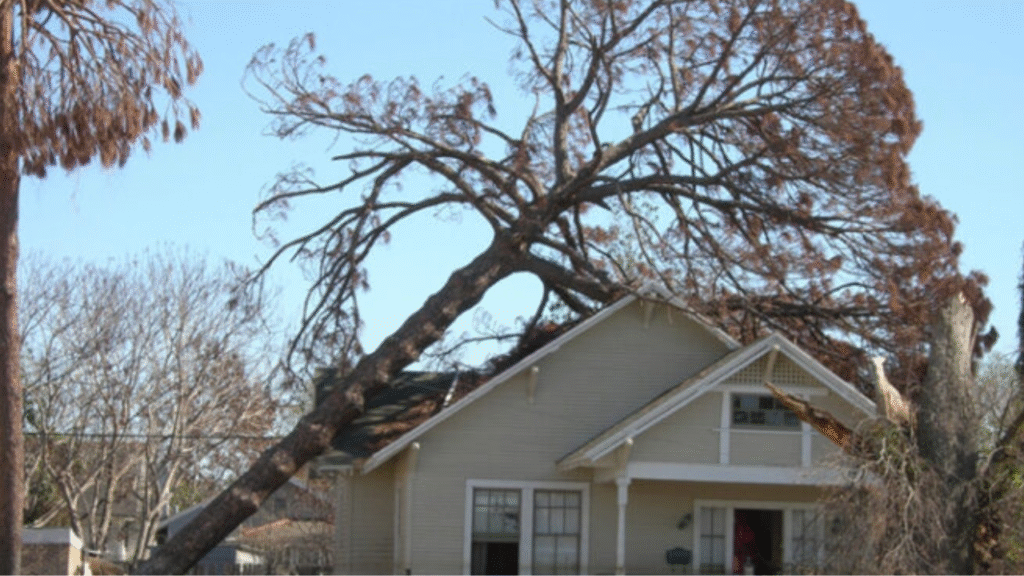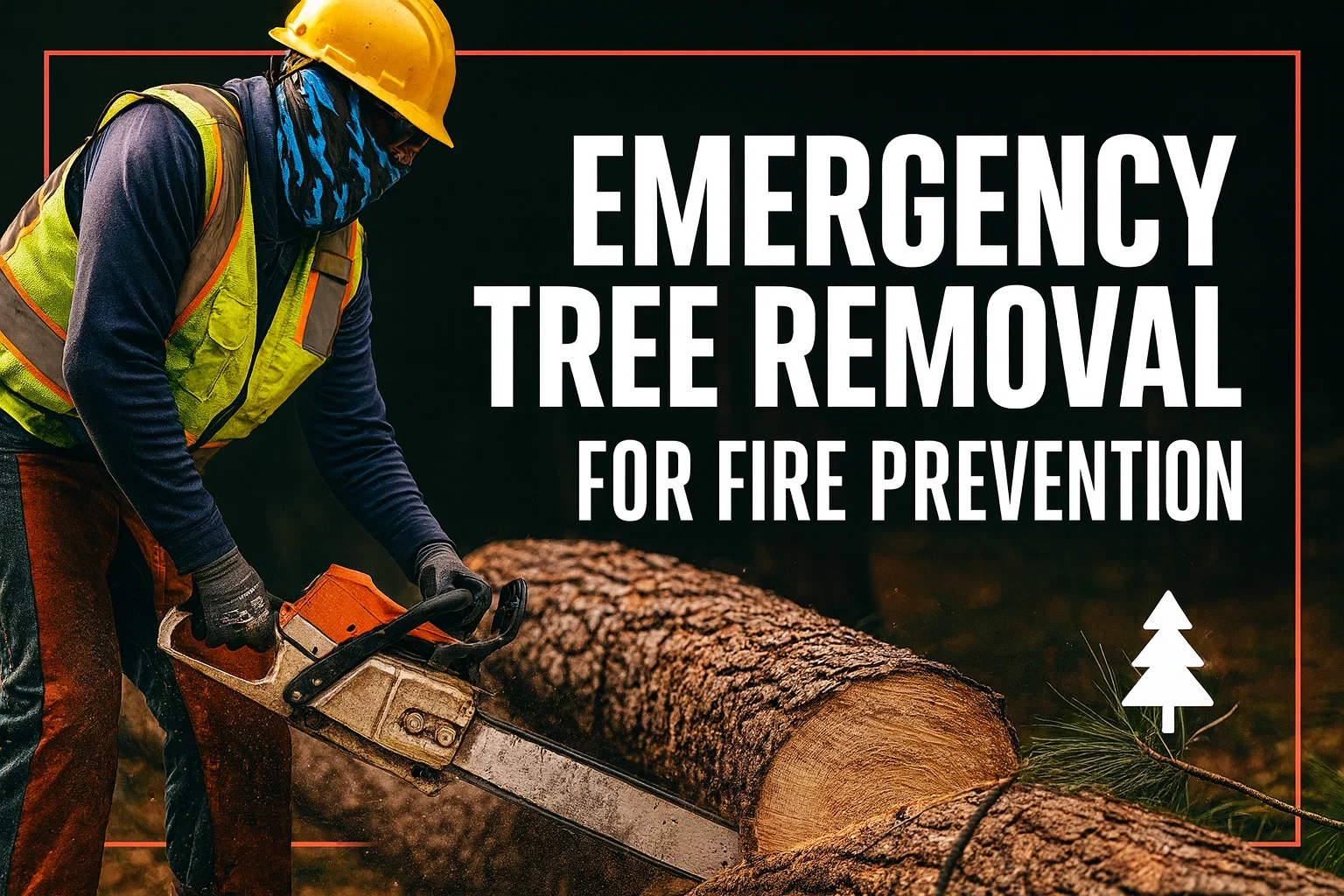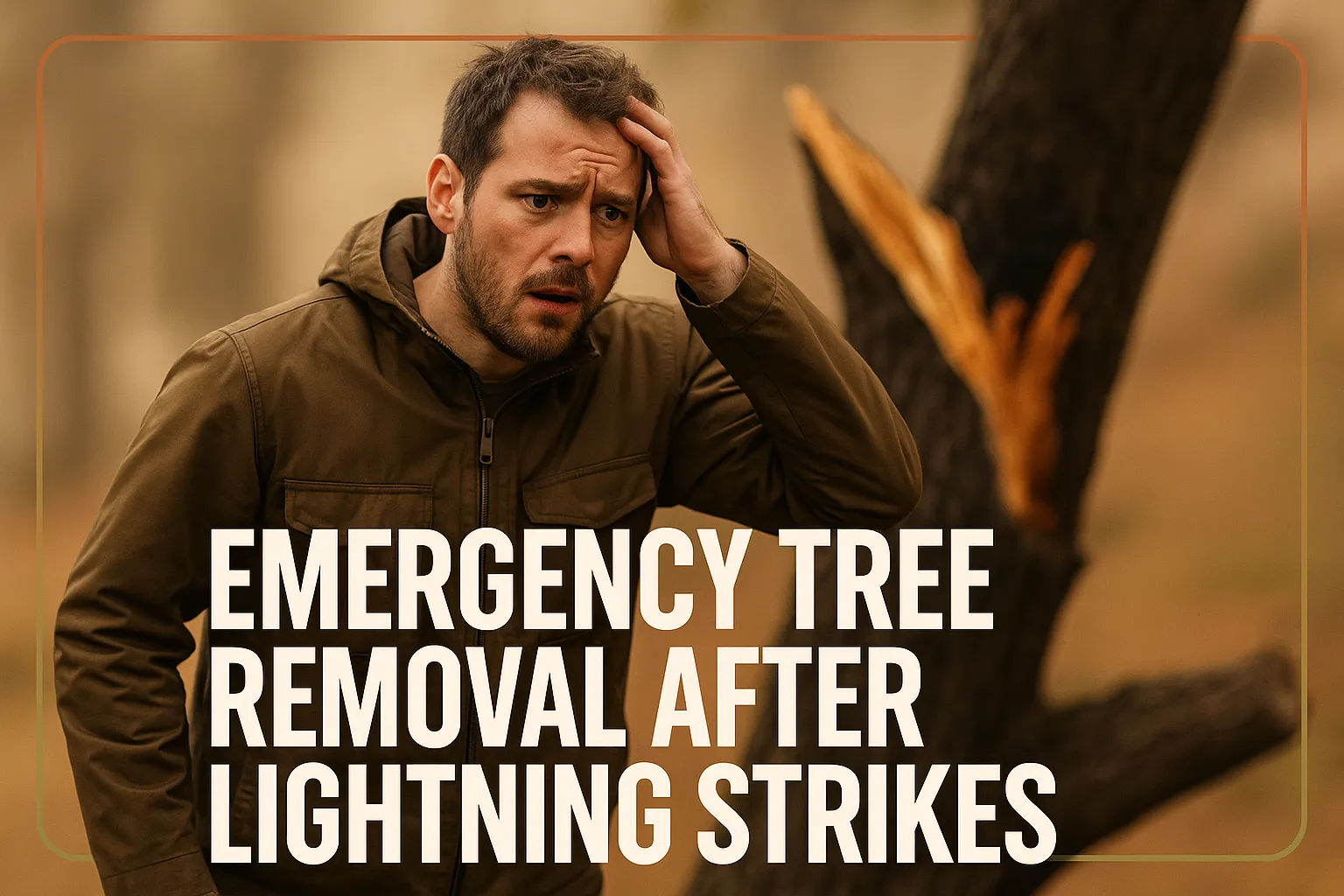It may come across as total disorder when a large tree topples over in your yard. The illustration of a fallen giant, broken branches, a lawn that is crushed, and the possibility of some kind of damage can be so overwhelming that you do not know which of them to tackle first. In addition to the ugly mess, fallen trees can also lead to safety hazards that are real: unstable limbs, hidden power lines that are hidden, or damage to the property. However, before the panic takes hold, breathe deeply once more. The removal of a fallen tree need not be stressful or even risky. Equipped with the right knowledge, the necessary tools, and a well-thought-out plan, you can go about it in a manner that suits you step by step, either by doing it yourself or by hiring the professionals.
With this simple step-by-step and thorough guide, you will be able to remove a fallen tree in a safe manner and with confidence, keep your home safe, and make your outdoor space look nice and safe again. It is time to change the mood from a scary problem to a manageable project and bring back peace to your yard.
Assessing the Situation After a Tree Falls
Is It Safe to Approach the Fallen Tree?
If a tree has dropped in your yard, do not run to check it out. Afterward, from a distance that is safe distance, see if there are any sorts of warning signs. For instance, check if there are parts of the tree that are still attached and that could fall at any time. Do not get close to the tree if the soil that is supporting it looks dangerous or if the wind is still very strong, as you can get hurt in such situations.
Checking for Power Lines and Property Damage
Look if the tree is nearest or in contact with any power lines because it is a major safety risk. If a tree is touching electrical lines, do not at any time try to touch or move it. What you need to do is call the utility company in your area and let them take care of the unsafe situation. Besides that, look at your house to see if there is any damage caused by the fallen tree to the buildings, the fence, or the underground utilities.
When to Call Emergency Services or a Professional
In case trees that have fallen block roads, driveways, or access points and pose a danger, then you should call emergency services. If the tree is huge, unstable and tangled in something dangerous like power lines, the safest and most efficient way of getting rid of it is that of a professional tree removal service. It is very helpful to prevent injuries and additional damage to your property by only calling for help when you need it.
Tools and Safety Gear Needed for Fallen Tree Removal
Essential Tools to Cut Up a Fallen Tree
Keeping safe and being effective when cutting up a fallen tree means that you need to have the right tools. A chainsaw that is in good condition should be the main cutting tool that you use because it is the one that enables you to do the big parts quickly and neatly. A hand saw or pruning saw is perfect for small branches when you want to make accurate cuts. An axe or hatchet will be great for removing wood that the saw can’t reach or for trimming wood. Besides that, ropes or chains are needed for holding and moving the parts of a large tree so that you can have control and avoid the tree parts suddenly shifting during the removal process.
How to Cut a Fallen Tree Safely
Step-by-Step Guide: How to Cut a Fallen Tree
Firstly, the process by Safely removing smaller branches first with a hand saw or pruning saw. Doing this will make the bigger branches approachable and it will also make your work safe. Then, decide to cut the huge branches into smaller pieces that you can handle, and do it from the outer parts to the inner ones. The chainsaw blade should be sharp if you want to have clean and accurate cuts of the main trunk. Controlled and calm actions should be used instead of hurried ones and the trunk should be cut into parts that are of an easy lifting and moving size.
Tips for Using a Chainsaw on a Downed Tree
While cutting a fallen tree with a chainsaw, you should always ensure that your grip is strong and your footing is stable so that no accidents happen. Also, you should frequently see to it that the chainsaw chain is of the correct tension if you want to have the best cutting result. It is very important to know the tension points of the tree, which are the points where the weight creates pressure, because if you cut these places in the wrong manner, your saw is going to kick back without giving you any warning. Do not cut above your shoulder or use the chainsaw on a ladder to keep control and reduce the chance of getting injured.
How to Cut Up a Fallen Tree into Manageable Pieces
Firstly, slice a downed tree into segments of around 2 to 3 feet in length so that you can handle them easily. Such a length is usually quite manageable for carrying and loading. Cut the pieces into flat surfaces so that they can be stably stacked, thus facilitating both mounting and storage. If it is a tight cut in which the chainsaw blade could be pinched by wood pressure, insert wedges to keep the opening of the cut and therefore protect your tools. Following these strategies will make the process safer and more efficient.

How to Remove a Fallen Tree From Your Property
Lifting and Moving Large Tree Sections Safely
When it comes to moving large sections of a fallen tree, proper lifting techniques are essential to avoid injury. Always bend your knees and keep your back straight when lifting heavy logs or branches. This helps protect your spine and reduces the risk of muscle strain. If the pieces are too heavy for you to carry by yourself, then get some people to help you. Besides that, the use of ropes or the installation of a pulley system can make the task of moving the heaviest parts not only safer and more manageable, but also give you better control over the movement of large timber.
Options for Hauling Away Tree Debris
Renting a wood chipper is an efficient method to convert tree trimmings and smaller wood pieces into mulch that is later reusable in the garden or can be disposed of quite easily. Once you have cut the tree into manageable pieces, the question of how to get rid of the debris is the next thing to decide. In case of big logs and heavy wood, a truck or trailer can be used to carry the waste to a landfill or recycling center, which is a great way. It is advisable to conform to your local rules about green waste disposal because certain places may have special instructions or services for the disposal of yard waste.
Local Services That Help Remove Fallen Trees
In case the removal of the tree is too much for you or you think it is not safe, you can get help from many local services. Removal services can help you, particularly the ones that are experts in damages caused by storms, and have both the right tools and know-how to do it safely. The trimming or landscaping services may offer the removal of debris as part of the services they provide. Besides, quite a few towns also have yard waste programs that may pick up tree debris for you. Using these local services makes tidy-up easy and safe.
Fallen Branch Removal Tips
When to Remove vs. Leave Branches for Cleanup Crews
Essentially, it should be a priority to take off those branches that are obstructing not only the pathways but also the entrances or the structures, since they are dangerous and inaccessible. However, in most cases, the smaller branches, leaf piles, or litter can be left with the staff of a professional cleanup who, on the one hand, have the right equipment and, on the other hand, are experienced in clearing these things. The method also helps to keep a balance between safety and efficiency; thus, it is less likely that there will be heavy tissue or risk of the first cleaning.
Reusing or Recycling Fallen Tree Branches
It is not necessary to throw away the fallen tree branches in all cases. You can take small branches to a chipper and turn them into mulch or compost which is a source of organic matter for your garden. Strong branches can be converted into the works of the house and garden like siding the garden, making a trellis, or using them as firewood.
Also, you can give the wood that is still useful to the local woodworkers or firewood programs and thus, instead of being wasted, it will be a source of other people. Such choices will help you reduce your environmental footprint and allow you to get the greatest value from your fallen tree waste.
Conclusion
At first, it may look like a huge task to take out a tree that has fallen; however, you can make your yard safe and clean in a very efficient way if you have the right preparation, tools, and safety measures with you. Safety must be the main point that you keep in mind at all times, and at the same time, you should know the circumstances in which the only option is to call the experts. In case you want to have the certainty that things will be done in the right way, call Alexa’s Tree Services, the closest professionals who are always ready to give you a hand.
FAQ’s
The time difference is a factor depending on the size of the tree, the place, and the way. If you do it yourself, it can take you a whole day. A professional crew can complete it in a shorter time.
Use a chainsaw suitable for the tree size and ensure it’s well-maintained for safety.
Avoid touching the tree. Dial the local utility company or emergency services immediately.
Check local regulations; burning may not be permitted and can be hazardous.
You should take a look at the trees frequently to detect any signs of illness or rot and make sure that the trees are pruned properly. Consult an arborist for tree health assessments.





